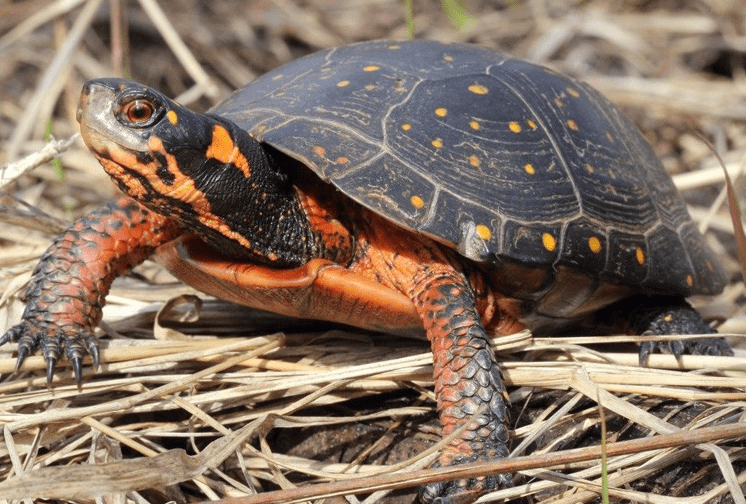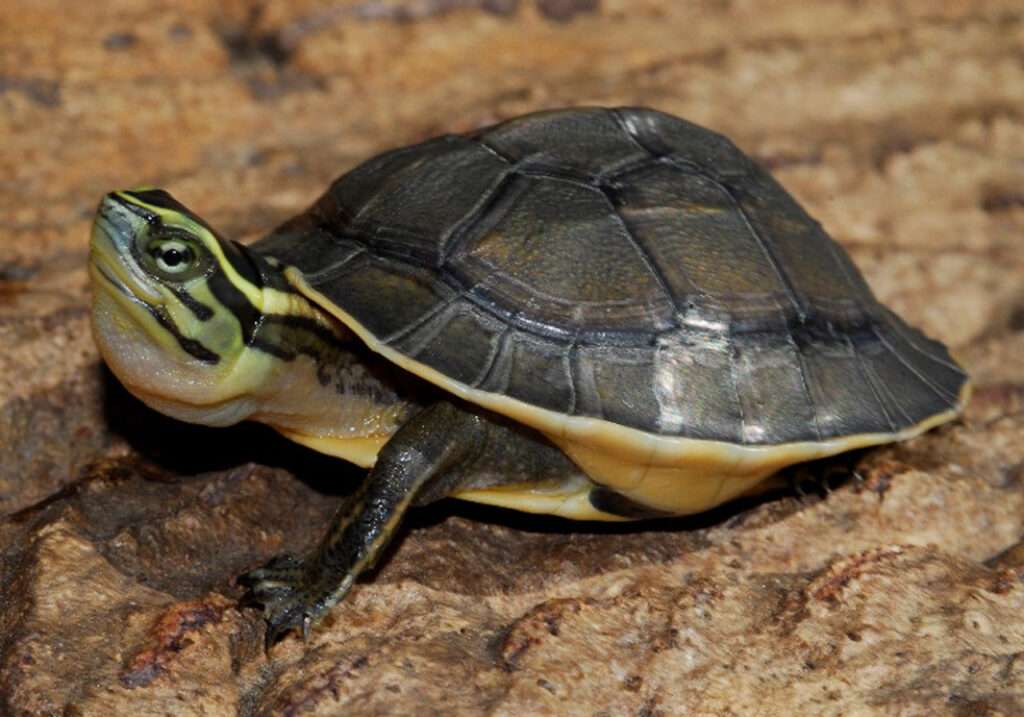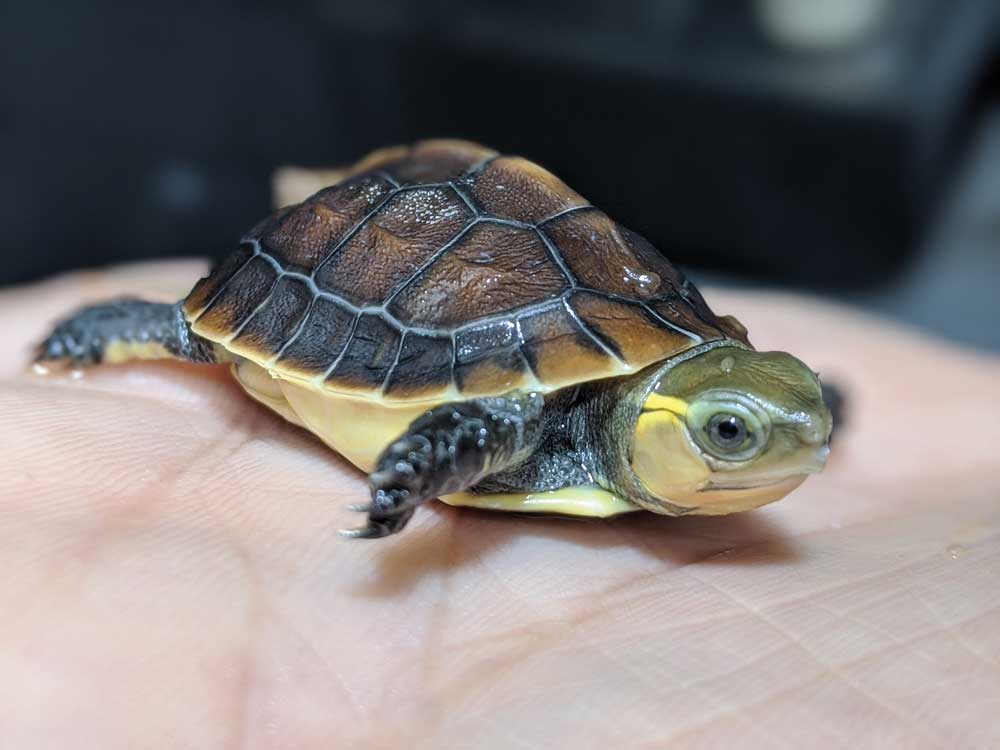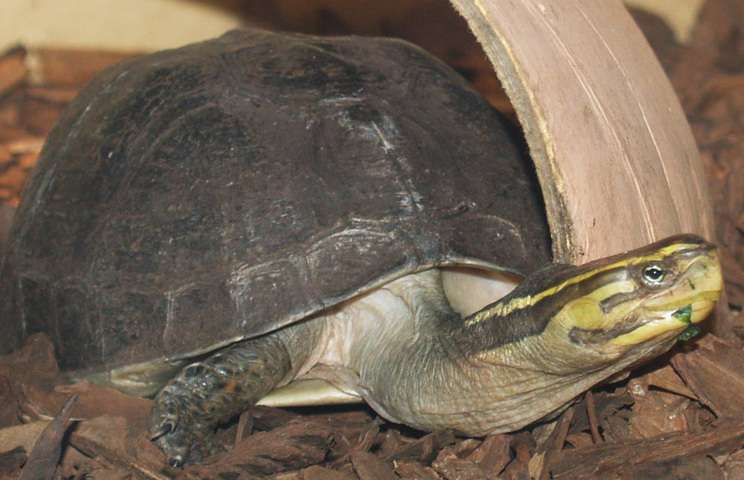
Description
The smooth, black shell of spotted turtles has yellow patches on it. In contrast to adults, who typically have more spots as they age, hatchlings typically have one spot per big scute on the shell. The head, neck, and forelegs are orange or yellow in colour.
Geographical Distribution
The spotted turtle can be found in Florida in the east, central Indiana and Ohio in the west, and southern Maine, Quebec, and Ontario in the south along the eastern US coast.
Behavior
Spotted Turtles are active and curious. However, they can be incredibly timid and easily frightened. From March through October, spotted turtles are active and can be observed sunbathing in the sun either individually or in groups. It starts in March and lasts through May. Males are actively, almost frantically pursuing females during this time; it’s not uncommon to witness multiple males pursuing a single girl at once.

Care as Pet
Housing
You can keep this species outdoors or indoors. Once they reach full maturity, they flourish best when housed in a proper outside habitat.
They shouldn’t be held in a space with deep water. They may drown or become extremely exhausted as a result because they are not great swimmers. In general, the water should be kept at a level where people can reach the surface while resting their feet on the ground. Hatchlings spend most of their time in the water and only come out to bask. You could note that as they become older, they spend less time in the water.
They have many of places to rest outside the water because their enclosure has logs and high platforms. Additionally, it indicates that they are receiving more enrichment and exercise. Utilizing plastic or aquatic plants also provides hiding places. Ensure that the spots for soaking up the sun away from the water are accessible and dry. It is simpler for your turtle to exit the water onto them if you create slanted access points.
You must keep the water clean because they do spend a lot of time in it, frequently even feeding there. Your turtle may suffer from a number of health issues if its tank or pond is dirty.
It is frequently advised to use a water filtration system appropriate for shallow water situations. As a result, you will have to physically clean the water less frequently, saving you time and lowering the stress level for the turtles. Additionally, you can purchase equipment that let you examine the water’s purity. This guarantees the filter is functioning properly and enables you to determine when a thorough clean-out is necessary.
Light
For turtles to efficiently metabolize calcium, they require adequate quantities of vitamin D3. They run the risk of developing a multitude of illnesses without this. Another crucial factor is to provide UVB lights above basking areas, especially in an indoor tank where your turtle won’t be exposed to natural sunshine.
Food and Water
Being mostly carnivorous, spotted turtles benefit from a varied diet by living as long as possible. It is sufficient to feed them once daily or every other day, and they frequently prefer foods like crickets, prawns, worms, and other insects. Even the occasional cooked piece of meat has been found to be enjoyed by them.
Fruits and leafy greens are enjoyed by some, while aquatic plants like duckweed may be preferred by others. If you like commercial turtle pellets, you can also include some of those. These pellets frequently have calcium with added vitamin D3, which is good for turtles kept inside.
Providing a Cuttlefish bone or a calcium supplement without Vitamin D3 to outdoor inhabitants is another option.
Table





